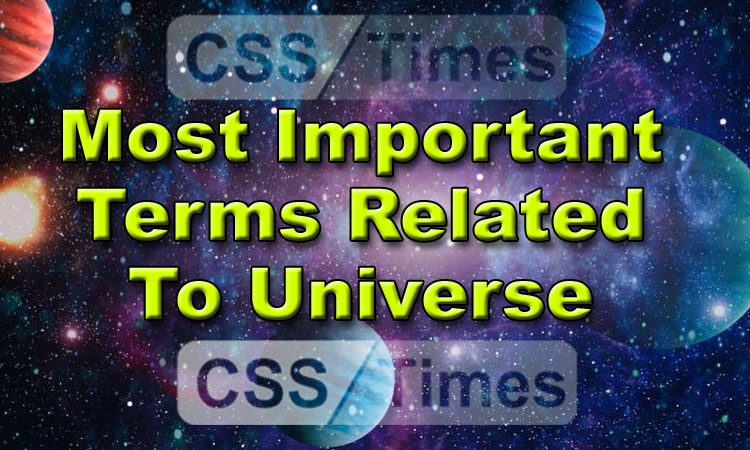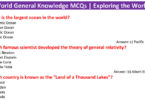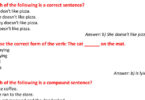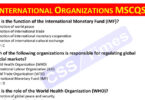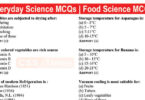Solar system
The Solar system consists of the Sun and the planets that move around the Sun in oval paths called orbits. A planet is a vast ball of rock or gas that travels in orbit around a star. There are other objects in our solar system too, such as moons and asteroids.
Astronomical Unit
The average distance between Earth and the Sun, 1.5 x 108 km
Aurora
The glowing light from solar particles interact with Earth’s magnetic field is called aurora
Comet
One of the small, icy bodies that orbit the sun that make tails of gas and dust when they get close to the sun
Ecliptic
The path the Sun seems to follow in the sky
Light-year
The distance light travels in a year
Lunar Eclipse
The name of the event when the Earth comes exactly between the Sun and the moon
Orbit
The path an object takes as it moves around another object
Rotation
An object spinning about its center
Solar Eclipse
The name of the event when the moon comes exactly between the Sun and Earth
Diamond Ring
Just before the moon completely covers the sun, mountains on the moon allow a bit of light to peek through creating this beautiful diamond ring effect at right
Sunspots
Sunspots are areas where the cooler areas show up darker than the surrounding surface. Some sunspots are larger than the diameter of the Earth and can reach up to 20,000 km in diameter.
Solar flares
Solar flares are jets of particles that burst from the sun and can disrupt satellite communications and knock out electricity on Earth. Solar flares can sometimes leave the sun and zoom towards Earth. When the high speed particles from the sun contact the Earth’s magnetic field it produces a lighting effect known as the aurora.
Supernova
The helium starts converting into carbon and carbon into heavy metal like iron in the core. This results in a massive explosion in the which is known as supernova
Planet
The IAU members gathered at the 2006 General Assembly agreed that a “planet” is defined as a celestial body that (a) is in orbit around the Sun, (b) has sufficient mass for its self-gravity to overcome rigid body forces so that it assumes a hydrostatic equilibrium (nearly round) shape, and (c) has cleared the neighborhood around its orbit.
Eight planets
Solar System consists of eight “planets” Mercury, Venus, Earth, Mars, Jupiter, Saturn, Uranus and Neptune.
Neutron Star
If the mass of the star is much more than the mass of the sun then it became Neutron Star.
Dwarf planets
A new distinct class of objects called “dwarf planets” was also decided in International Astronomical Union. It was agreed that “planets” and “dwarf planets” are two distinct classes of objects. The first members of the dwarf planet category are Ceres, Pluto and Eris.
Temperature at Sun
The temperature at the core, or centre, of the Sun is about 16 million degrees Celsius. From the core, this incredible heat energy flows to the surface, where the temperature is closer to 6000 degrees Celsius. This is still so incredibly hot that it would melt anything it touched.
The Sun is so far away that if you tried to drive there (sun), travelling at 100 kilo meters an hour, it would take 170 years to reach your destination!
Seasons of Earth
Earth has seasons because it is titled at an angle. This means that as it orbits around the Sun different parts are titled towards the Sun. when the northern hemisphere or top half of the Earth, points to the Sun, this area gets summer. At the same time, the southern hemisphere, or bottom half of the Earth, is pointing away from the Sun and this area experiences its winter.
Night and day
Night and day happen because Earth rotates, or makes one complete turn, every 24 hours. As well as traveling in an orbit around the Sun, planet Earth spins around its axis, an imaginary line going through the North and South Poles. This means that at any one time, half of Earth is facing the Sun and has daytime, while the other half faces away from the Sun, so it has night.
Magma
Inside the centre of the Earth there is red-hot, liquid rock. This rock is called magma.
Crust
The land and oceans at the Earth’s surface lie on an outer layer of cool, hard rock called the crust.
Mantle
The hot magma below rises and sinks slowly in a layer called the mantle.
Core
At the very centre of the Earth is a super-hot ball of iron called the core
Plates
The earth’s surface is cracked into large pieces, called plates, which fit together like an enormous jigsaw. There are nine large plates and several smaller ones.
Solar wind
The solar wind consists of particles (ionized atoms from the solar corona) and fields (in particular, magnetic fields). As the Sun rotates once in approximately 27 days, the magnetic field transported by the solar wind gets wrapped into a spiral.
Blue moon
When a second full moon occurs in a single month is called blue moon.
Asteroids
These are found between the orbits of Mars and Jupiter. These are celestial bodies with sizes ranging from a few meters to hundreds of the kilometres of diameter, revolving around the sun. They have originated by the disintegration of the planets.
Meteors
Meteors are the celestial bodies composed of dust and gases. After coming under the influence of earth’s gravity, they move with a great velocity towards the earth. But, due to collision with the particles of the atmosphere they burn and get converted into ash.
Meteorites
Meteors which are large in size and do not burn completely and reach the surface of the earth are called meteorites.
Comets
There are the bodies composed of dust, ice and gases, which come from the colder and darker areas, away from the sun. They go around the sun in large and irregular orbits. While moving in their orbits, when they come very close to the sun, they start glowing with a bright gaseous tail always pointing away from the sun. Many a times, comets are visible to the naked eye and present a very spectacular sight. Comet Halley, discovered by Edmund Halley, returns after every 76 years.

